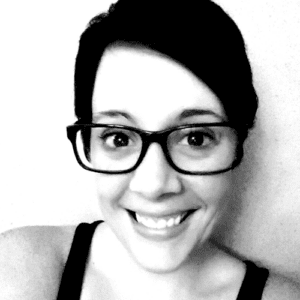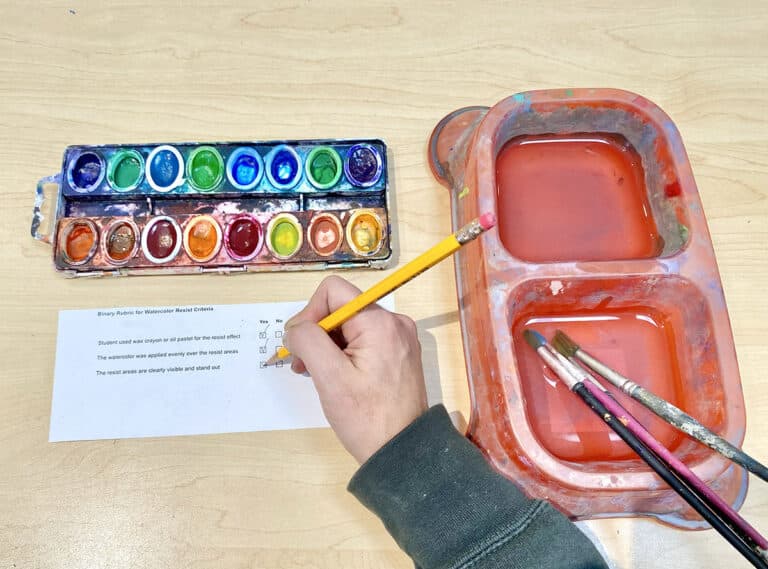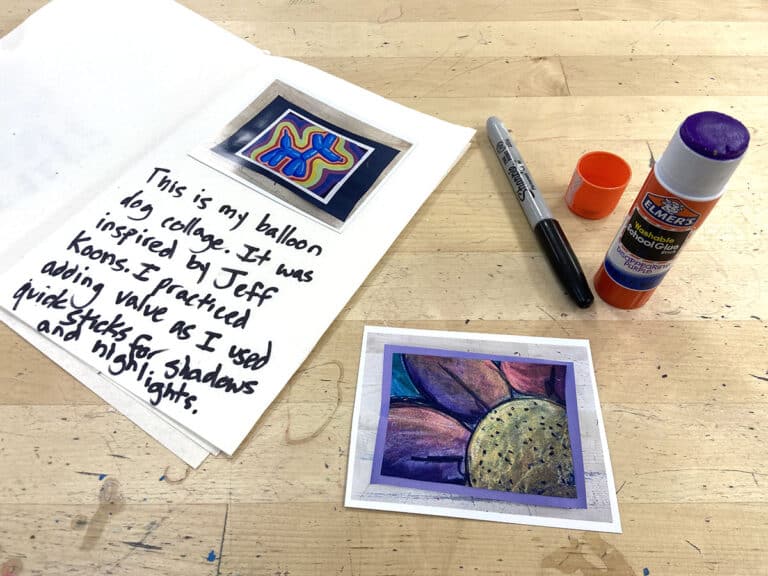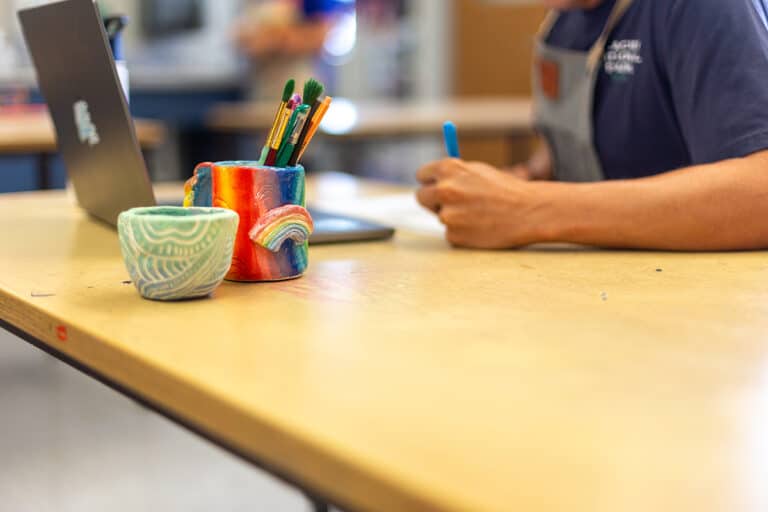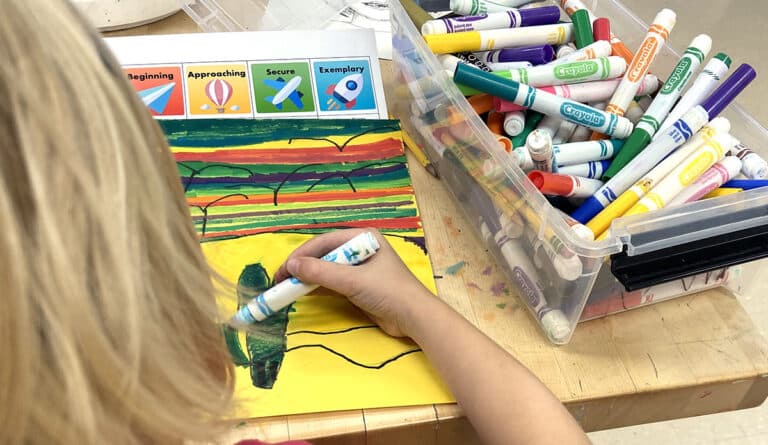Last month I wrote an article that asked if we should stop assessing artwork. I argued that a holistic form of assessment should be used in our classrooms and that we should be evaluating students in the four areas laid out by the National Standards: Creating, Presenting, Responding, and Connecting. “Okay,” you said, “but how do I do that?” Today I’m going to tell you.
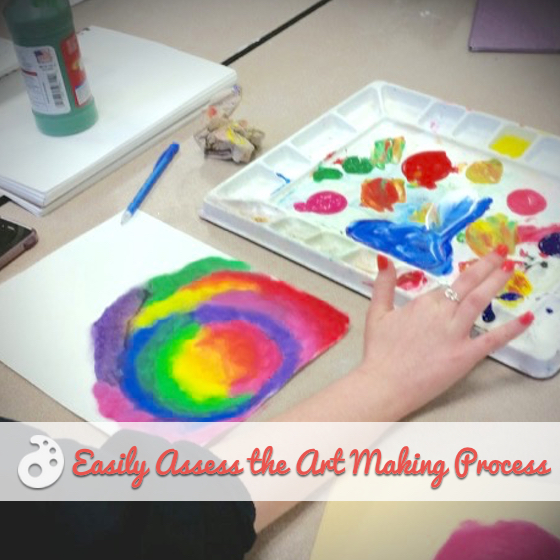
From the National Standards to Studio Habits of Mind, contemporary art education pedagogy touts the importance of what students learn and think during the creative process. The question many educators have is how to assess it. You can’t see what kids are thinking, which makes evaluating it difficult.
The key is finding ways to make what’s going on in students’ heads more transparent.
One way to do this is to create a checklist in order to pinpoint what you’re looking for.
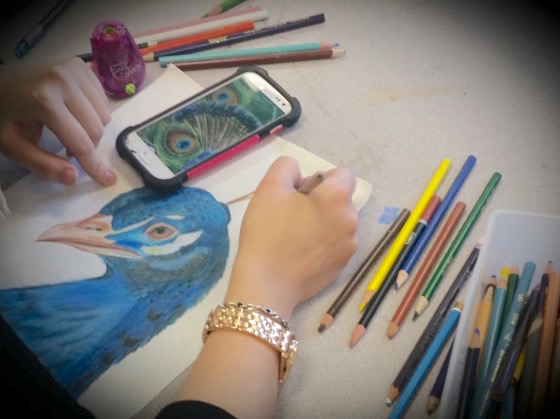
How to Use a Checklist to Assess Process
1. Plan to include choice.
Assessing process is all about the decisions that students make as they create. It can’t be assessed unless students are making some artistic decisions independently. Plan a lesson that incorporates at least a moderate level of student choice in the areas of media, process, or interpretation.
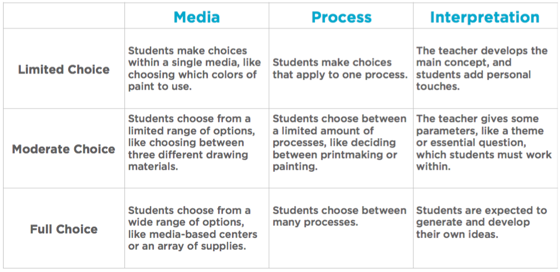
Another must is developing a learning goal that captures what students should be able to do in the area you’re evaluating. Like all learning goals, this should be specific to the age and ability level of your students.
2. Pre-plan your checklist.
What are some ways that you foresee students demonstrating the behaviors you’ve selected to evaluate? What will you be able to see in their artwork? What questions can you ask as they work that will help make their thinking visible?
Use your answers to these questions as a guide to spell out what evidence of learning you’re looking for. Have a copy of the list you’ve developed ready to use as you evaluate. Then, as students create, observe and question to assess, noting on your checklist when students meet your objectives.
The content of your checklist will depend on the age group you teach, the learning goal you create, and the lesson that supports your instruction. There is no “right way” to do this. You can download one example below.

3. Make time to observe.
Finding the time to talk to and observe each student can seem like a huge challenge. Pre-planning is essential. Another helpful tip is to observe over a few class periods. The days where you plan to observe can be grouped together as part of a unit about process or interspersed throughout the year. Also, the type of lesson you plan plays a huge part in how much time you have to assess. If you pick a familiar media and spend a few minutes at the start of class discussing a drawing prompt, then you can step back and let kids work independently. As you circulate, you should have a big chunk of time to observe.
The Takeaway
Checklists are useful tools for assessing process. To create one, develop a process-centered learning goal, create a lesson with a moderate level of choice, and pre-plan what behaviors you’re looking for.
Are you looking for even more ways to implement meaningful grading methods into your art courses? Register for the Winter 2016 Online Conference to watch Jean Barnett clarify how her grading process has helped provide a more holistic form of assessment in her high school classroom.
Do you think process is important to evaluate?
How do you assess process?
Magazine articles and podcasts are opinions of professional education contributors and do not necessarily represent the position of the Art of Education University (AOEU) or its academic offerings. Contributors use terms in the way they are most often talked about in the scope of their educational experiences.
